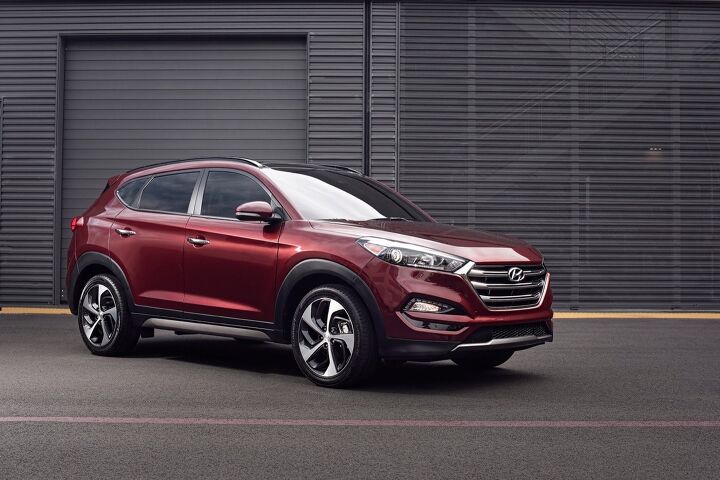#AutomotiveMarket
North American Dealers Annoyed by Hyundai's Lousy Volume Strategy
Since 2009, Hyundai’s North American volume has seen record sales every single year. While the last few annual assessments haven’t resulted in the same volume boom as the immediate post-recession years, the company hasn’t seen any shrinkage — despite below-average incentive spending and a lineup that doesn’t exactly sync with the region’s evolving automotive tastes. Hyundai dealers are probably singing the brand’s praises and getting its logo tattooed on their staff then, right?
Not quite. While Hyundai has achieved nearly a decade of growth in the Wild West, dealers are growing increasingly disappointed with its tactics and are less than enthused about future business prospects — especially as it doesn’t appear Hyundai has any interest in scaling back car volume for the sake of SUV sales.
In fact, while both the Hyundai Elantra and Sonata remain higher-volume models, both have undergone a noticeable delivery decrease since 2012. Meanwhile, sales of utility vehicles like the Santa Fe and Tucson have nearly doubled in the same timeframe. Hyundai put 62,817 Tucson SUVs onto North American roads in 2012, and that figure rose to 113,502 last year. It could have been more, had the company been better at supplying those vehicles.
Shaping a Bleaker Future: Generational Trends in New Car Ownership
There has been plenty of doomsday prophecies surrounding the automotive industry in the last year, based largely upon the assumption that younger drivers are less willing to support it or simply cannot afford to. Stupid, right? Not really. While the direness of the situation is often exaggerated, plenty of evidence exists to underscore the impending troubles of the new car market. Whether it’s because those in their salad days don’t care as much about cars as their elders or simply have less disposable income (hint: it’s the second one), real change is coming for OEMs.
Younger shoppers are noticeably more likely to purchase used vehicles than their more venerable contemporaries are, but “young” is a relative term — especially in this instance. According to a recent study, 53.7 percent of prospective buyers under forty plan on getting a used car the next time they need wheels. For those over forty, that number is 49.7 percent. As you’d expect older people to buy more new cars, this much of a disparity at mid-life is significant.
Ford's Electric CUV Could Lead in a Surprisingly Crowded Segment
Ford is admittedly behind its main rivals in terms of offering practical and purpose-built EVs but, when it finally comes to market in 2020, its first long-range electric should deliver what buyers want. When Ford announced its plans to launch an electrified crossover at January’s Consumer Electronics Show, the Chevrolet Bolt had already begun to lose its geek chic luster. However, we have to defer our judgement as Ford’s entry could eventually have an EV spec sheet that’ll make GM blush.
We’re beginning to get a better picture of the upcoming Ford — which I’m going to begin calling the E-CUV (electric crossover utility vehicle) since it doesn’t have an official name — now that the company’s chief technology officer Raj Nair has started loosening his lips. The upside is that it will be an affordable unit targeting everything the average consumer wants. The downside is that it’ll have competition early in its lifespan.
Record High Automotive Incentives Could Harm Sustained Profitability
Every industry analyst is beginning to sing the same tune. Despite things looking good now, the worm is about to turn. Global sales look poised to remain strong this year but the market has peaked and sales should persist on a graph as a flat line. Next year could be a different story, however, and there’s much apprehension surrounding lengthening loan terms and the upsurge of subprime lessees.
Rising incentives are also causing alarm; J.D. Power and Associates expects the average incentive per new unit to top $4,000 in 2017. While that tactic may get people into dealerships now, it might also harm long-term profitability as the automotive industry swings toward leaner times.
BMW Has Big Plans for China
“China is a global driver of growth in the automotive market,” said Friedrich Eichiner, CFO of the BMW Group. “China will play a major role in the global automotive business, in the development of future technologies.” Then he signed off on a major expansion project. Together with joint venture partner Brilliance, BMW will be able to produce 175,000 Made in China BMWs, up from 30,000 units currently.




















Recent Comments